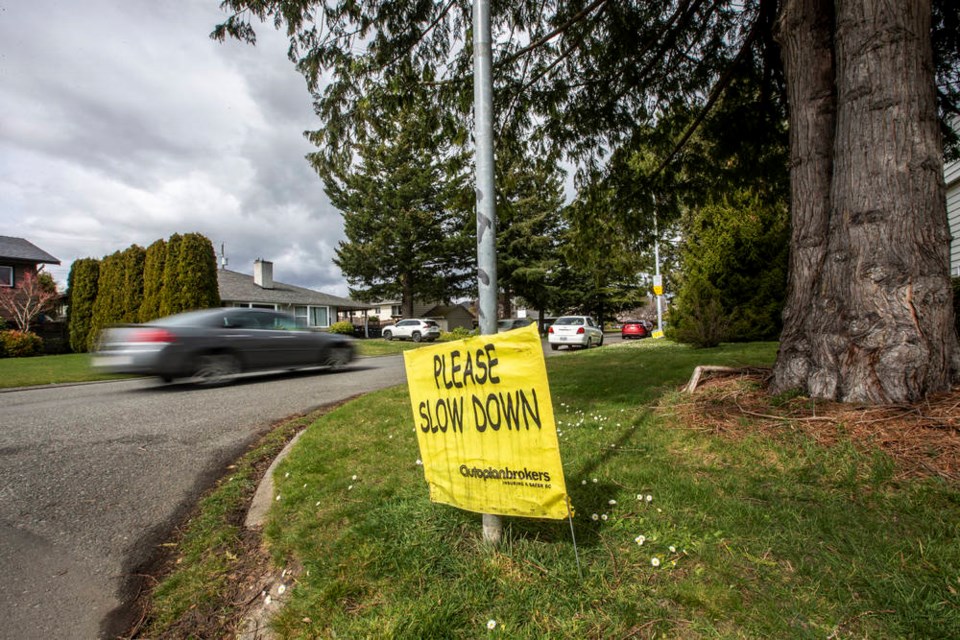A group of Saanich councillors wants to change course and try a significant reduction in speed limits on residential streets to 30 km/h from 50 km/h.
Council decided last fall to apply for a three-year pilot project in which the default speed limit would be set at 40 km/h on side streets — defined as those without a continuous yellow centre line.
But councillors Zac de Vries, Rebecca Mersereau and Ned Taylor now say the initial proposal didn’t go far enough and that reducing the limit even further to 30 km/h has the potential to save more lives and prevent more injuries.
As well, neighboring Victoria plans to apply for a similar pilot project that would set speed limits at 30 km/h on its residential streets.
If Saanich adopted the same approach, more than half the capital region’s population would be testing 30 km/h limits at the same time, the councillors say in a report going to a special meeting Monday night.
The province has yet to begin accepting applications for the pilot projects, so the councillors say there is still time to alter Saanich’s proposal.
They point to a staff report from last fall that said pedestrians or cyclists are more likely to die when hit by vehicles travelling at higher speeds.
“Collisions at 30 km/h or less correlate with a lower probability of death (10%) , compared to a 40% probability of death in a collision at 40 km/h,” the report said, citing a number of research studies. “The probability of death increases significantly, with an 80% probability of death in a collision at 50 km/h.”
De Vries said in an interview Saturday that a lot of community members are calling for 30 km/h limits on their streets.
“So seeing the data, seeing the public input, and then now seeing that we have the opportunity — given the delays from the province — it made sense that council should consider changing and amending our application,” he said.
Elise Cote, a member of a new group, Better Mobility Saanich, praised de Vries and the other councillors for bringing the motion forward.
She lives in a Gorge-Tillicum neighborhood without sidewalks and says parents live in constant fear that one of their children will be struck by a vehicle.
And with no new infrastructure expected in the near future, Cote said reducing the speed limit to 30 km/h on residential streets is the “absolute cheapest” thing Saanich could do to improve safety.
“The difference between 50 and 40 is not enough to make a tangible difference, in my opinion, in terms of our quality of life, or our safety,” she said.
“I also worry about enforcement, because I know that the police are often loath to enforce or give tickets for speeds within that kind of five- to 10-[km/h] range above the speed limit. So 10 kilometres [lower] is not an improvement. It’s not going to send a message to residents.”
De Vries said Cote’s neighborhood is typical of many in Saanich, which was developed at a time when it was assumed that residents would leave their homes and drive everywhere, rather than walk or cycle or use a mobility device.
“So we have a lot of roads in Saanich — compared to other municipalities in the region – that do not have sidewalks, that do not have other infrastructure protecting the vulnerable road users,” de Vries said. “They’re often narrow and so they’re not really conducive to having cars travel so quickly.”
Finally, the councillors argue that pilot projects “should be ambitious” and that testing out a modest reduction to 40 km/h amounts to a missed opportunity.
“If we’re reducing speed limits for the purpose of improving safety, why would we not reduce speed limits to a level that’s actually going to have a significant impact and that drastically increases a pedestrian’s chance of surviving the impact of a vehicle?” Taylor said in an interview.



